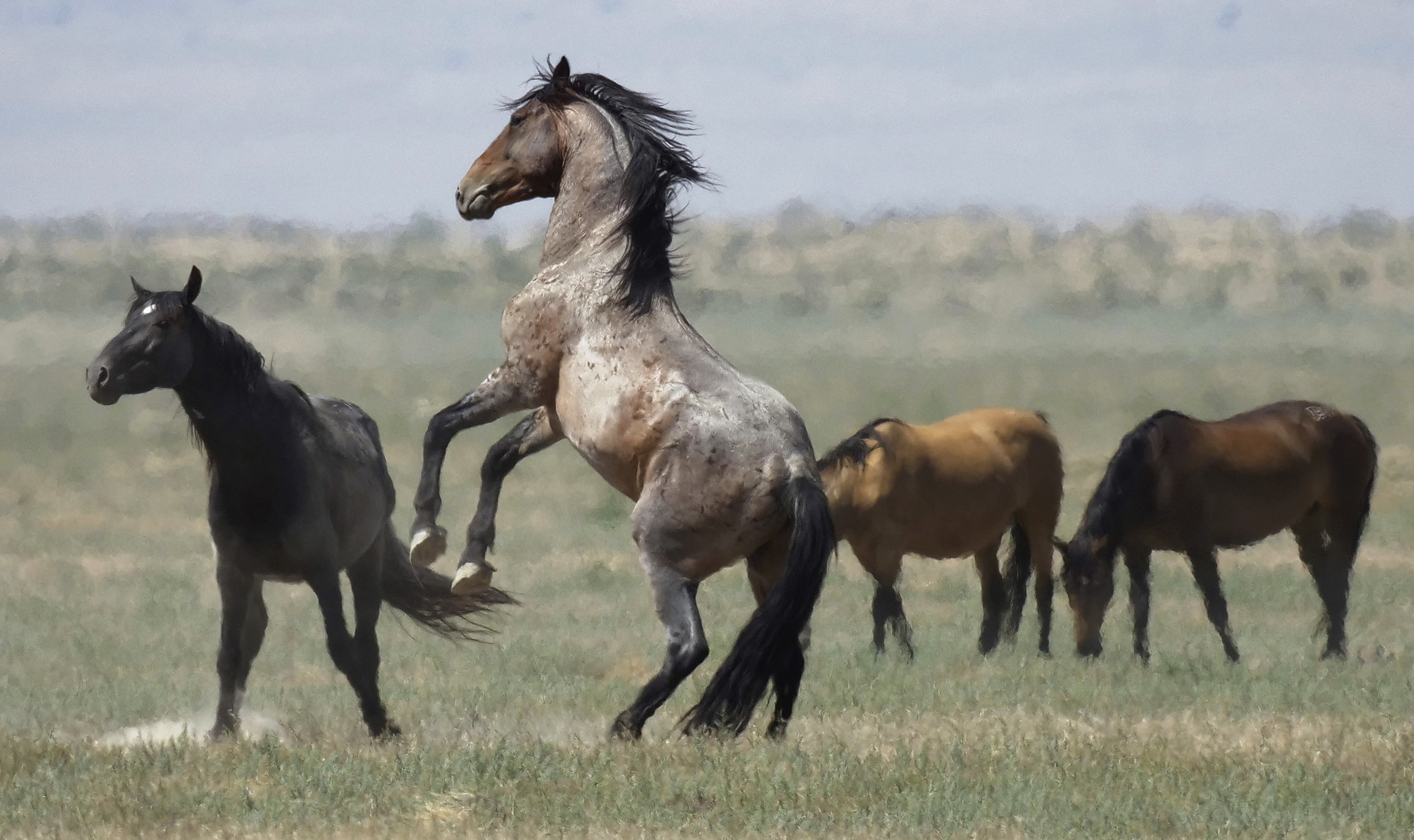ST. GEORGE — Dixie National Forest and the Bureau of Land Management Cedar City Field Office have released a draft plan to reduce the wild horse population in the North Hills Herd Management Area southwest of Cedar City.
If approved, the project would reduce the herd population to between 40 and 60, the number that the 1986 Dixie National Forest Land and Resource Management Plan reported as what the landscape could support long term. It was determined by studying vegetation productivity and the number of horses needed to maintain a genetically healthy herd.
There are currently around 270 wild horses in the herd.
“The land is supporting that number right now, but that doesn’t mean that that’s a healthy herd,” District Ranger Nick Glidden said. “Our job is to maintain the habitat out there for the long term.”
The plan would allow the agencies to manage the size of the herd by gathering and removing horses to be put up for adoption through a BLM limited sales program. Horses not adopted, sold or moved into holding would be released back into the North Hills area after being treated with fertility control vaccines to slow the growth of the population.

With few natural predators, the herd grows roughly 20% every year. A large, unmanaged herd can cause a number of environmental issues, including the depletion of soil and vegetation, as well as water scarcity.
While the horses naturally tend to relocate when their resources become scarce, Glidden said North Hills is a geographically bound area that limits the number of places they can go, keeping them somewhat constrained.
“They will move around that limited area as resources start to become less available, but ultimately when you get too many numbers of horses in that defined management area, then all of the resources become depleted,” he said.
Occasionally the horses do leave the management area and start to graze on private property or areas where cattle ranchers have permits to graze their herds, damaging the land and using their resources. Part of the management plan would allow the horses to be removed once they leave the management area.

“Our goal is to have a healthy herd out there and to maintain the appropriate management level for the landscape,” Glidden said. “And that’s what we’re trying to do with this plan.”
The Forest Service and BLM jointly manage the land, and the BLM signed a decision in February authorizing the plan after finding no significant environmental impact when conducting the National Environmental Policy Act study.
Now that the draft plan has been made public, those who submitted a comment during the NEPA process have been contacted with the opportunity to submit any objections, allowing officials to review their comments and make any necessary changes before it is approved. Over 5,000 comments were submitted during the NEPA process.
All project documents, including the NEPA report and draft plan, can be found on the U.S. Forest Service website.
Copyright St. George News, SaintGeorgeUtah.com LLC, 2019, all rights reserved.